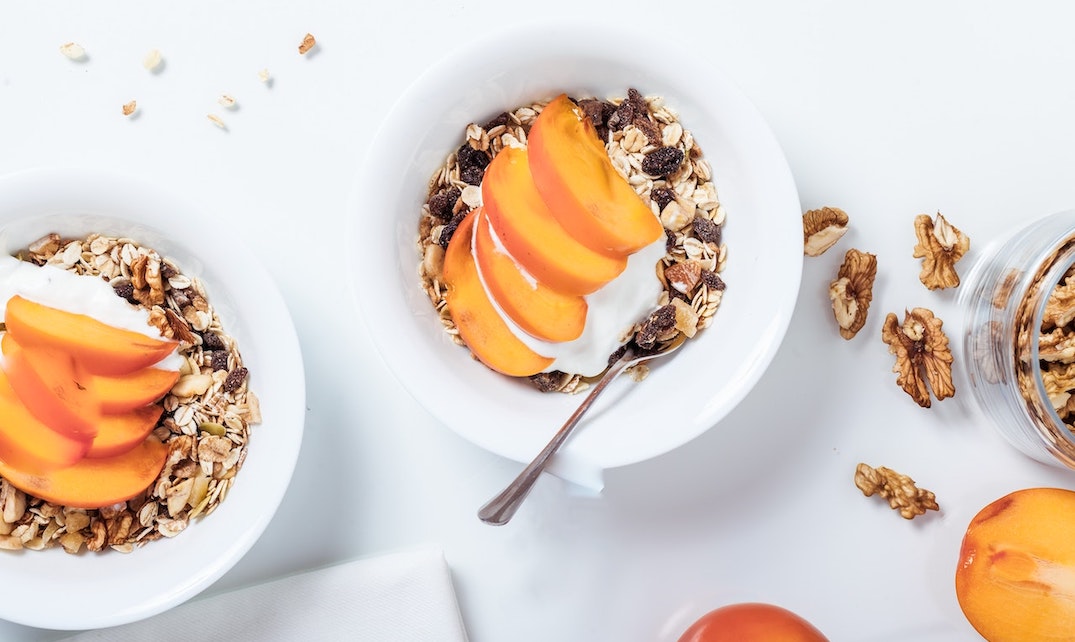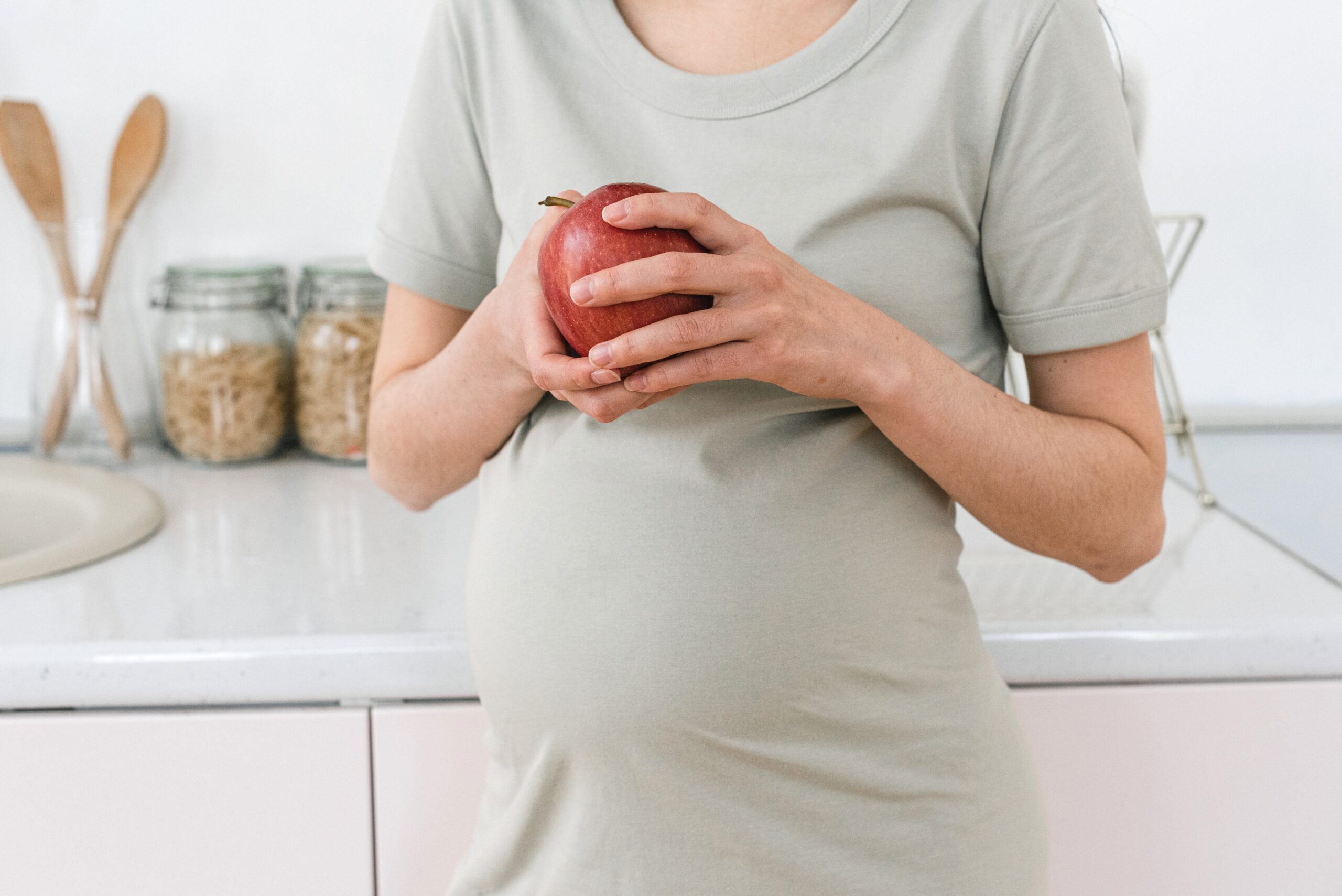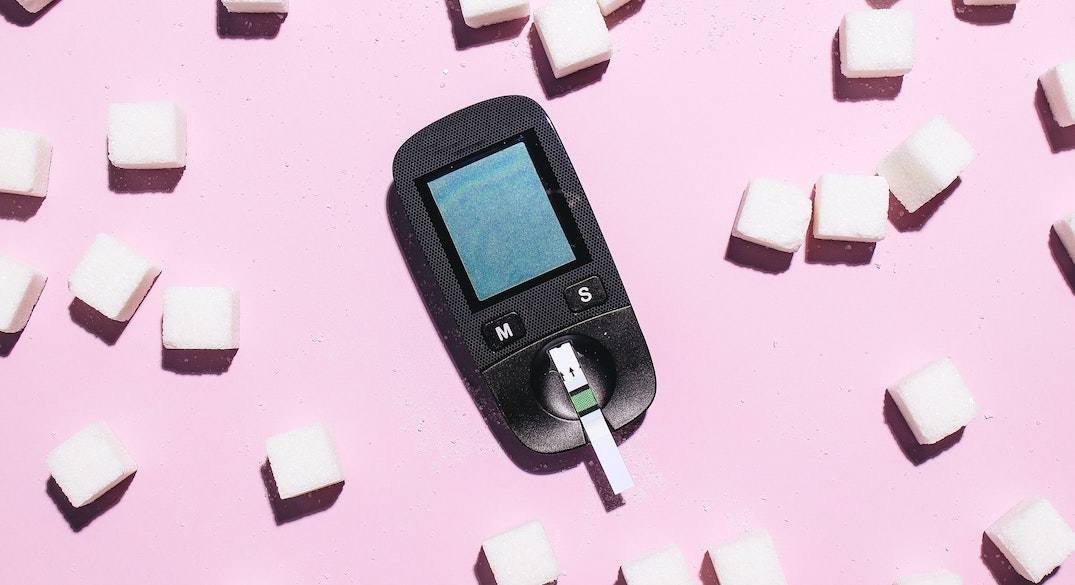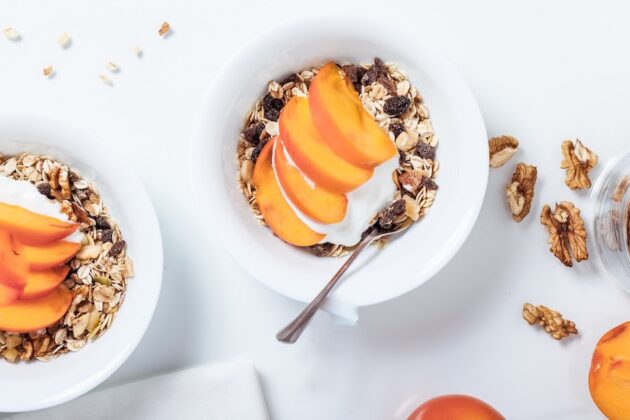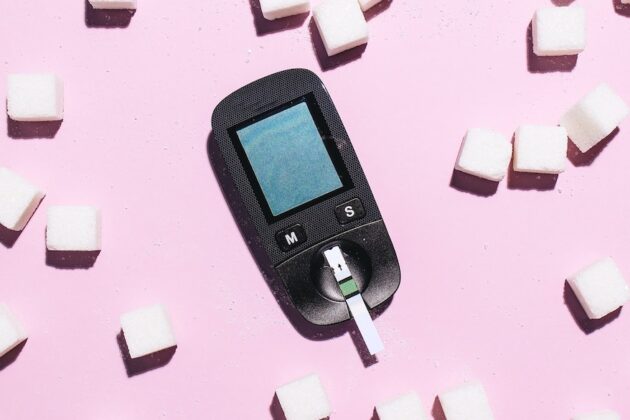15 Lunch Ideas for Gestational Diabetes
If you’re pregnant and dealing with gestational diabetes, it’s natural to have questions about which foods are right for you and your baby. It can be worrying trying to make sure you are maintaining healthy blood sugar levels while getting all the essential nutrients.
To help, we’ve come up with some lunch ideas that are generally considered safe to eat with gestational diabetes. As always, it’s important to talk to your doctor and prenatal nutritionist, if you have one, to make sure you’re eating correctly and staying safe.

Healthy mom, healthy baby: Get support from a prenatal dietitian
90% of Zaya Care patients pay $0 for one-on-one counseling with a Registered Dietitan
15 lunch ideas for gestational diabetes
When choosing a lunch with gestational diabetes, it’s important to choose one that has a good balance of protein, healthy fats, and complex carbs.
Protein and healthy fats help to slow down the absorption of glucose, while complex carbohydrates release glucose slowly, preventing a spike in blood sugar levels. It’s also important to choose whole-grain options over refined grains, as they have a lower glycemic index and more fiber.
Here are some tasty lunch ideas that are generally safe to eat with gestational diabetes:
- Grilled chicken salad: Make a salad with grilled chicken, lettuce, cucumber, tomato, and a dressing of your choice. Grilling the chicken instead of frying it helps to reduce the fat content and, therefore, calorie count.
- Veggie wrap: Take a whole wheat wrap and fill it with veggies like lettuce, tomato, cucumber, and bell peppers, as well as some avocado and/or hummus. Using a whole wheat wrap instead of a regular wrap can help keep blood sugar levels stable.
- Tuna salad: Mix tuna, celery, onion, and a small amount of light mayonnaise. Serve it on whole wheat bread or with crackers.
- Lentil soup: Make lentil soup with vegetables like carrots, onions, and celery. Lentils are a good source of protein, fiber, and complex carbohydrates that release glucose slowly, making it safe for people with gestational diabetes.
- Turkey burger: Use lean ground turkey to make a burger and serve it on a whole wheat bun with a side of veggies. Avoid adding sugary condiments like ketchup or barbecue sauce.
- Grilled salmon: Grill a salmon fillet and serve it with a side of steamed veggies. Salmon is an excellent source of protein, omega-3 fatty acids, and other essential nutrients.
- Egg salad: Mix hard-boiled eggs, light mayonnaise, mustard, and some diced vegetables like celery and onion. Serve it on whole wheat bread or with crackers.
- Quinoa salad: Make a quinoa salad with veggies like bell peppers, cucumbers, tomatoes, and a dressing of your choice. Quinoa is a good source of protein and fiber, and it has a low glycemic index, making it safe for people with gestational diabetes.
- Roasted chicken: Roast a chicken breast and serve it with a side of roasted vegetables like carrots, onions, and bell peppers. Roasting vegetables brings out their natural sweetness and flavor without adding any additional sugar.
- Greek yogurt parfait: Layer Greek yogurt with berries and a small amount of granola. Greek yogurt is an excellent source of protein and is low in sugar.
- Vegetable omelet: Make an omelet with veggies like spinach, tomatoes, onions, and mushrooms. Eggs are an excellent source of protein and healthy fats, and adding veggies increases the fiber content of the meal.
- Chicken & vegetable stir-fry: Stir-fry chicken and veggies like broccoli, carrots, and peppers in a small amount of oil. Use low-sugar sauces like soy sauce or hoisin sauce to add flavor.
- Turkey wrap: Take a whole wheat wrap and fill it with turkey breast, avocado, lettuce, and tomato. Turkey breast is a good source of protein, and avocado is high in healthy fats.
- Veggie burger: Use a plant-based patty to make a burger and serve it on a whole wheat bun with a side of veggies. Plant-based patties are often lower in calories and saturated fat than regular meat patties.
- Chicken & vegetable kebab: Thread chicken breast and veggies like zucchini, bell peppers, and onion onto skewers and grill. The vegetables add fiber and nutrients, while the chicken is a good source of protein.

Healthy mom, healthy baby: Get support from a prenatal dietitian
90% of Zaya Care patients pay $0 for one-on-one counseling with a Registered Dietitan
It’s always a good idea to work with a nutritionist or dietitian if you have gestational diabetes. They can help you make sure you’re eating healthy and safe foods, and they can help address any issues that come up.
Here at Zaya Care, we can help you find a gestational diabetes dietitian that can help you select safe lunches and develop a meal plan to properly manage your gestational diabetes.
>> Read More:
- Breakfast Ideas for Gestational Diabetes
- Snack Ideas for Gestational Diabetes
- Bedtime Snacks for Gestational Diabetes
- Dessert Ideas for Gestational Diabetes
How to choose healthy lunches when you have gestational diabetes
Here are some general tips to follow when making or ordering lunch while you have gestational diabetes:
- Choose whole, unprocessed foods – These are the best option for managing blood sugar levels due to their high fiber content, which can slow down glucose absorption in the bloodstream.
- Avoid sugary and refined foods – Candy, baked goods, white bread, and similar foods should be avoided as much as possible as they cause quick spikes in blood sugar levels and provide little nutrients.
- Focus on protein and healthy fats – Including protein and healthy fats in your lunches can help balance blood sugar levels and keep you feeling full for longer. Good sources of protein include lean meats, eggs, nuts, and legumes, while healthy fats can be found in avocados, nuts, seeds, and fatty fish. Learn how much protein you need during pregnancy here.
- Monitor portion sizes – Eating too much of any food, even healthy foods, can cause blood sugar levels to rise. It’s crucial to monitor portion sizes and eat smaller, frequent meals throughout the day.
- Work with a registered dietitian – A gestational diabetes dietitian can help tailor a meal plan to your specific needs, offer guidance on healthy food choices, and monitor your progress over time.
What foods to avoid for lunch with gestational diabetes
When you have gestational diabetes, it’s important to avoid or limit foods that can cause your blood sugar levels to spike quickly. Here are some types of foods to avoid or limit for lunch:
- Highly processed foods: These often have high amounts of sugar, salt, and/or preservatives. These foods are typically high in carbohydrates and can cause a quick spike in blood sugar levels.
- Fried foods & high-fat foods: Such as fast foods, fatty cuts of meat, and full-fat dairy products. These foods are often high in calories and can lead to weight gain, which can make it more difficult to manage blood sugar levels.
- Refined grains: Like white bread, white pasta, and white rice. These foods are processed and stripped of fiber and other nutrients, which can cause a rapid rise in blood sugar levels. It’s better to opt for whole-grain versions.
- Sugary drinks: Like soda, fruit juice, and sweetened tea or coffee. These drinks can cause a quick spike in blood sugar levels and are often high in calories, which can contribute to weight gain. Water, unsweetened tea, and black coffee are better beverage options.
- Fruits that are high in sugar: Like bananas, mangoes, and pineapples. While fruits are generally a healthy choice, it’s important to be mindful of portion sizes and choose fruits that are lower in sugar, such as berries or apples, to avoid a quick spike in blood sugar levels.
Tips for eating with gestational diabetes
Here are some other general tips for eating with gestational diabetes:
- Eat smaller, more frequent meals throughout the day: Eating three main meals with two to three snacks in between can help regulate blood sugar levels and prevent spikes. Avoiding fasting is important during pregnancy, especially if you have gestational diabetes.
- Choose whole, unprocessed foods: Whole foods are high in fiber, which can help slow down the absorption of glucose into the bloodstream and regulate blood sugar levels.
- Include protein and healthy fats in each meal and snack: These nutrients can help balance blood sugar levels and keep you feeling full for longer. Good sources of protein include lean meats, eggs, nuts, and legumes, while healthy fats can be found in avocados, nuts, seeds, and fatty fish.
- Monitor portion sizes: Eating too much of any food, even healthy foods, can cause blood sugar levels to rise. It’s important to monitor portion sizes and eat in moderation.
- Stay hydrated: Drinking plenty of water and other non-sweetened beverages can help flush out excess sugar and keep blood sugar levels in check.
- Check your blood sugar levels regularly: Monitoring your blood sugar levels at home can help you understand how different foods affect your blood sugar and make adjustments to your diet as needed.
- Work with a registered dietitian: A prenatal dietitian can help you create a personalized meal plan that meets your specific needs and helps you manage your blood sugar levels. They can also provide guidance on healthy food choices and monitor your progress over time.
>> Find a gestational diabetes dietitian that accepts your insurance
How working with a gestational diabetes nutritionist can help
Working with a prenatal nutritionist or registered dietitian can be very helpful in managing gestational diabetes. Here are some ways a gestational diabetes nutritionist can help:
- Develop a customized meal plan – A nutritionist can help create a personalized meal plan for you that takes into account your dietary needs, preferences, lifestyle, and more. They can help you identify foods that should be avoided and recommend alternatives that are safe and nutritious for gestational diabetes.
- Provide education & support – A nutritionist can help you understand what kinds of foods are healthy so you can make good choices on your own. They will teach you things like making healthy food choices, reading food labels, and preparing meals that are appropriate for managing gestational diabetes. They can also offer tips for eating out and managing blood sugar levels during special events or holidays.
- Monitor progress & adjust recommendations – A nutritionist will monitor your blood sugar levels and make adjustments to your plan when needed. They can also provide ongoing support and motivation to help you stick to your diet.
- Address other concerns – A nutritionist can also help address other dietary concerns that may be present alongside gestational diabetes, such as food allergies or intolerances, vegetarian or vegan diets, or specific cultural or religious dietary restrictions.
Overall, nutritionists/dietitians play a key role in helping manage gestational diabetes. Here at Zaya Care, we can help you find a gestational diabetes dietitian that is covered by your insurance. Providers we work with offer online and in-person visits, so you can find help in a way that is convenient to you.

Healthy mom, healthy baby: Get support from a prenatal dietitian
90% of Zaya Care patients pay $0 for one-on-one counseling with a Registered Dietitan
If you’re pregnant and dealing with gestational diabetes, it’s natural to have questions about which foods are right for you and your baby. It can be worrying trying to make sure you are maintaining healthy blood sugar levels while getting all the essential nutrients.
To help, we’ve come up with some lunch ideas that are generally considered safe to eat with gestational diabetes. As always, it’s important to talk to your doctor and prenatal nutritionist, if you have one, to make sure you’re eating correctly and staying safe.

Healthy mom, healthy baby: Get support from a prenatal dietitian
90% of Zaya Care patients pay $0 for one-on-one counseling with a Registered Dietitan
15 lunch ideas for gestational diabetes
When choosing a lunch with gestational diabetes, it’s important to choose one that has a good balance of protein, healthy fats, and complex carbs.
Protein and healthy fats help to slow down the absorption of glucose, while complex carbohydrates release glucose slowly, preventing a spike in blood sugar levels. It’s also important to choose whole-grain options over refined grains, as they have a lower glycemic index and more fiber.
Here are some tasty lunch ideas that are generally safe to eat with gestational diabetes:
- Grilled chicken salad: Make a salad with grilled chicken, lettuce, cucumber, tomato, and a dressing of your choice. Grilling the chicken instead of frying it helps to reduce the fat content and, therefore, calorie count.
- Veggie wrap: Take a whole wheat wrap and fill it with veggies like lettuce, tomato, cucumber, and bell peppers, as well as some avocado and/or hummus. Using a whole wheat wrap instead of a regular wrap can help keep blood sugar levels stable.
- Tuna salad: Mix tuna, celery, onion, and a small amount of light mayonnaise. Serve it on whole wheat bread or with crackers.
- Lentil soup: Make lentil soup with vegetables like carrots, onions, and celery. Lentils are a good source of protein, fiber, and complex carbohydrates that release glucose slowly, making it safe for people with gestational diabetes.
- Turkey burger: Use lean ground turkey to make a burger and serve it on a whole wheat bun with a side of veggies. Avoid adding sugary condiments like ketchup or barbecue sauce.
- Grilled salmon: Grill a salmon fillet and serve it with a side of steamed veggies. Salmon is an excellent source of protein, omega-3 fatty acids, and other essential nutrients.
- Egg salad: Mix hard-boiled eggs, light mayonnaise, mustard, and some diced vegetables like celery and onion. Serve it on whole wheat bread or with crackers.
- Quinoa salad: Make a quinoa salad with veggies like bell peppers, cucumbers, tomatoes, and a dressing of your choice. Quinoa is a good source of protein and fiber, and it has a low glycemic index, making it safe for people with gestational diabetes.
- Roasted chicken: Roast a chicken breast and serve it with a side of roasted vegetables like carrots, onions, and bell peppers. Roasting vegetables brings out their natural sweetness and flavor without adding any additional sugar.
- Greek yogurt parfait: Layer Greek yogurt with berries and a small amount of granola. Greek yogurt is an excellent source of protein and is low in sugar.
- Vegetable omelet: Make an omelet with veggies like spinach, tomatoes, onions, and mushrooms. Eggs are an excellent source of protein and healthy fats, and adding veggies increases the fiber content of the meal.
- Chicken & vegetable stir-fry: Stir-fry chicken and veggies like broccoli, carrots, and peppers in a small amount of oil. Use low-sugar sauces like soy sauce or hoisin sauce to add flavor.
- Turkey wrap: Take a whole wheat wrap and fill it with turkey breast, avocado, lettuce, and tomato. Turkey breast is a good source of protein, and avocado is high in healthy fats.
- Veggie burger: Use a plant-based patty to make a burger and serve it on a whole wheat bun with a side of veggies. Plant-based patties are often lower in calories and saturated fat than regular meat patties.
- Chicken & vegetable kebab: Thread chicken breast and veggies like zucchini, bell peppers, and onion onto skewers and grill. The vegetables add fiber and nutrients, while the chicken is a good source of protein.

Healthy mom, healthy baby: Get support from a prenatal dietitian
90% of Zaya Care patients pay $0 for one-on-one counseling with a Registered Dietitan
It’s always a good idea to work with a nutritionist or dietitian if you have gestational diabetes. They can help you make sure you’re eating healthy and safe foods, and they can help address any issues that come up.
Here at Zaya Care, we can help you find a gestational diabetes dietitian that can help you select safe lunches and develop a meal plan to properly manage your gestational diabetes.
>> Read More:
- Breakfast Ideas for Gestational Diabetes
- Snack Ideas for Gestational Diabetes
- Bedtime Snacks for Gestational Diabetes
- Dessert Ideas for Gestational Diabetes
How to choose healthy lunches when you have gestational diabetes
Here are some general tips to follow when making or ordering lunch while you have gestational diabetes:
- Choose whole, unprocessed foods – These are the best option for managing blood sugar levels due to their high fiber content, which can slow down glucose absorption in the bloodstream.
- Avoid sugary and refined foods – Candy, baked goods, white bread, and similar foods should be avoided as much as possible as they cause quick spikes in blood sugar levels and provide little nutrients.
- Focus on protein and healthy fats – Including protein and healthy fats in your lunches can help balance blood sugar levels and keep you feeling full for longer. Good sources of protein include lean meats, eggs, nuts, and legumes, while healthy fats can be found in avocados, nuts, seeds, and fatty fish. Learn how much protein you need during pregnancy here.
- Monitor portion sizes – Eating too much of any food, even healthy foods, can cause blood sugar levels to rise. It’s crucial to monitor portion sizes and eat smaller, frequent meals throughout the day.
- Work with a registered dietitian – A gestational diabetes dietitian can help tailor a meal plan to your specific needs, offer guidance on healthy food choices, and monitor your progress over time.
What foods to avoid for lunch with gestational diabetes
When you have gestational diabetes, it’s important to avoid or limit foods that can cause your blood sugar levels to spike quickly. Here are some types of foods to avoid or limit for lunch:
- Highly processed foods: These often have high amounts of sugar, salt, and/or preservatives. These foods are typically high in carbohydrates and can cause a quick spike in blood sugar levels.
- Fried foods & high-fat foods: Such as fast foods, fatty cuts of meat, and full-fat dairy products. These foods are often high in calories and can lead to weight gain, which can make it more difficult to manage blood sugar levels.
- Refined grains: Like white bread, white pasta, and white rice. These foods are processed and stripped of fiber and other nutrients, which can cause a rapid rise in blood sugar levels. It’s better to opt for whole-grain versions.
- Sugary drinks: Like soda, fruit juice, and sweetened tea or coffee. These drinks can cause a quick spike in blood sugar levels and are often high in calories, which can contribute to weight gain. Water, unsweetened tea, and black coffee are better beverage options.
- Fruits that are high in sugar: Like bananas, mangoes, and pineapples. While fruits are generally a healthy choice, it’s important to be mindful of portion sizes and choose fruits that are lower in sugar, such as berries or apples, to avoid a quick spike in blood sugar levels.
Tips for eating with gestational diabetes
Here are some other general tips for eating with gestational diabetes:
- Eat smaller, more frequent meals throughout the day: Eating three main meals with two to three snacks in between can help regulate blood sugar levels and prevent spikes. Avoiding fasting is important during pregnancy, especially if you have gestational diabetes.
- Choose whole, unprocessed foods: Whole foods are high in fiber, which can help slow down the absorption of glucose into the bloodstream and regulate blood sugar levels.
- Include protein and healthy fats in each meal and snack: These nutrients can help balance blood sugar levels and keep you feeling full for longer. Good sources of protein include lean meats, eggs, nuts, and legumes, while healthy fats can be found in avocados, nuts, seeds, and fatty fish.
- Monitor portion sizes: Eating too much of any food, even healthy foods, can cause blood sugar levels to rise. It’s important to monitor portion sizes and eat in moderation.
- Stay hydrated: Drinking plenty of water and other non-sweetened beverages can help flush out excess sugar and keep blood sugar levels in check.
- Check your blood sugar levels regularly: Monitoring your blood sugar levels at home can help you understand how different foods affect your blood sugar and make adjustments to your diet as needed.
- Work with a registered dietitian: A prenatal dietitian can help you create a personalized meal plan that meets your specific needs and helps you manage your blood sugar levels. They can also provide guidance on healthy food choices and monitor your progress over time.
>> Find a gestational diabetes dietitian that accepts your insurance
How working with a gestational diabetes nutritionist can help
Working with a prenatal nutritionist or registered dietitian can be very helpful in managing gestational diabetes. Here are some ways a gestational diabetes nutritionist can help:
- Develop a customized meal plan – A nutritionist can help create a personalized meal plan for you that takes into account your dietary needs, preferences, lifestyle, and more. They can help you identify foods that should be avoided and recommend alternatives that are safe and nutritious for gestational diabetes.
- Provide education & support – A nutritionist can help you understand what kinds of foods are healthy so you can make good choices on your own. They will teach you things like making healthy food choices, reading food labels, and preparing meals that are appropriate for managing gestational diabetes. They can also offer tips for eating out and managing blood sugar levels during special events or holidays.
- Monitor progress & adjust recommendations – A nutritionist will monitor your blood sugar levels and make adjustments to your plan when needed. They can also provide ongoing support and motivation to help you stick to your diet.
- Address other concerns – A nutritionist can also help address other dietary concerns that may be present alongside gestational diabetes, such as food allergies or intolerances, vegetarian or vegan diets, or specific cultural or religious dietary restrictions.
Overall, nutritionists/dietitians play a key role in helping manage gestational diabetes. Here at Zaya Care, we can help you find a gestational diabetes dietitian that is covered by your insurance. Providers we work with offer online and in-person visits, so you can find help in a way that is convenient to you.

Healthy mom, healthy baby: Get support from a prenatal dietitian
90% of Zaya Care patients pay $0 for one-on-one counseling with a Registered Dietitan





